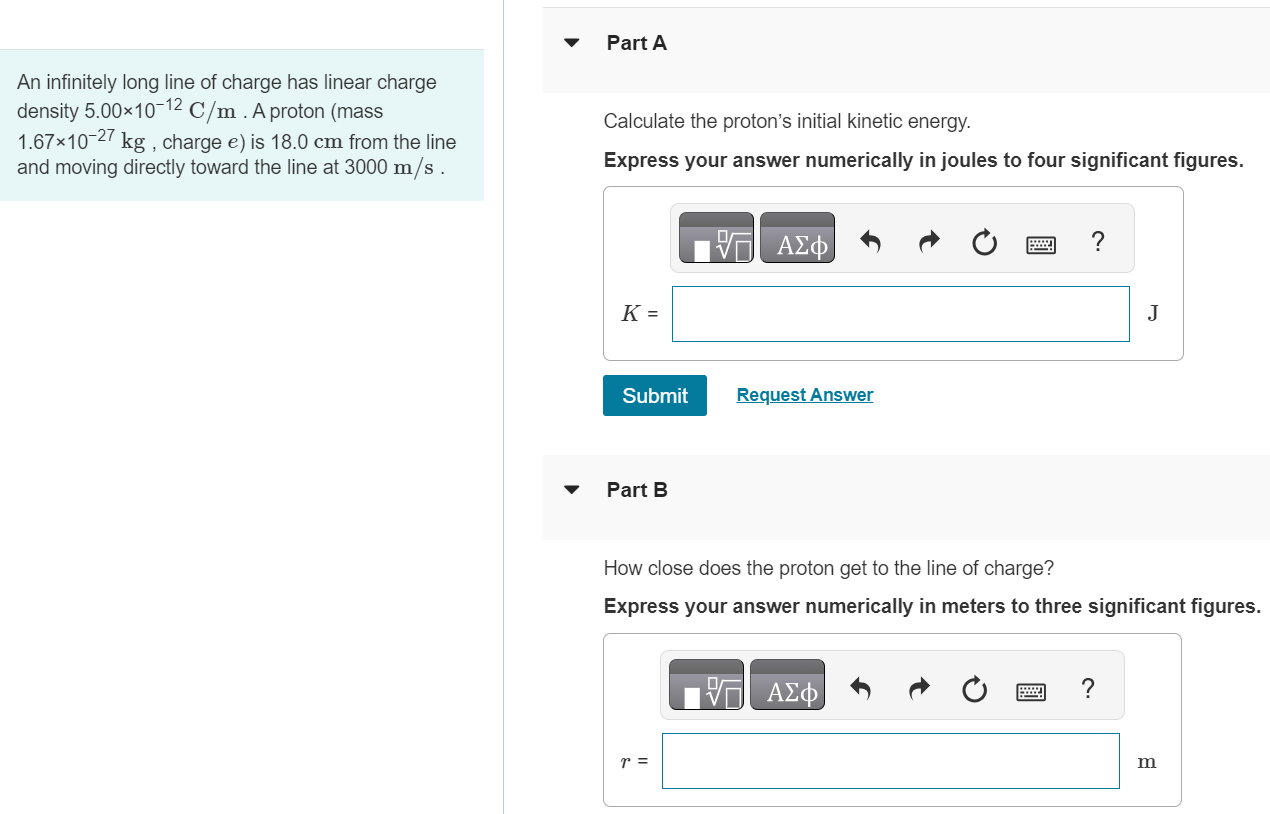Part A An infinitely long line of charge has linear charge density 5.00×10−12 C/m. A proton (mass 1.67×10−27 kg, charge e ) is 18.0 cm from the line and moving directly toward the line at 3000 m/s. Calculate the proton's initial kinetic energy. Express your answer numerically in joules to four significant figures. Submit Request Answer Part B How close does the proton get to the line of charge? Express your answer numerically in meters to three significant figures.
